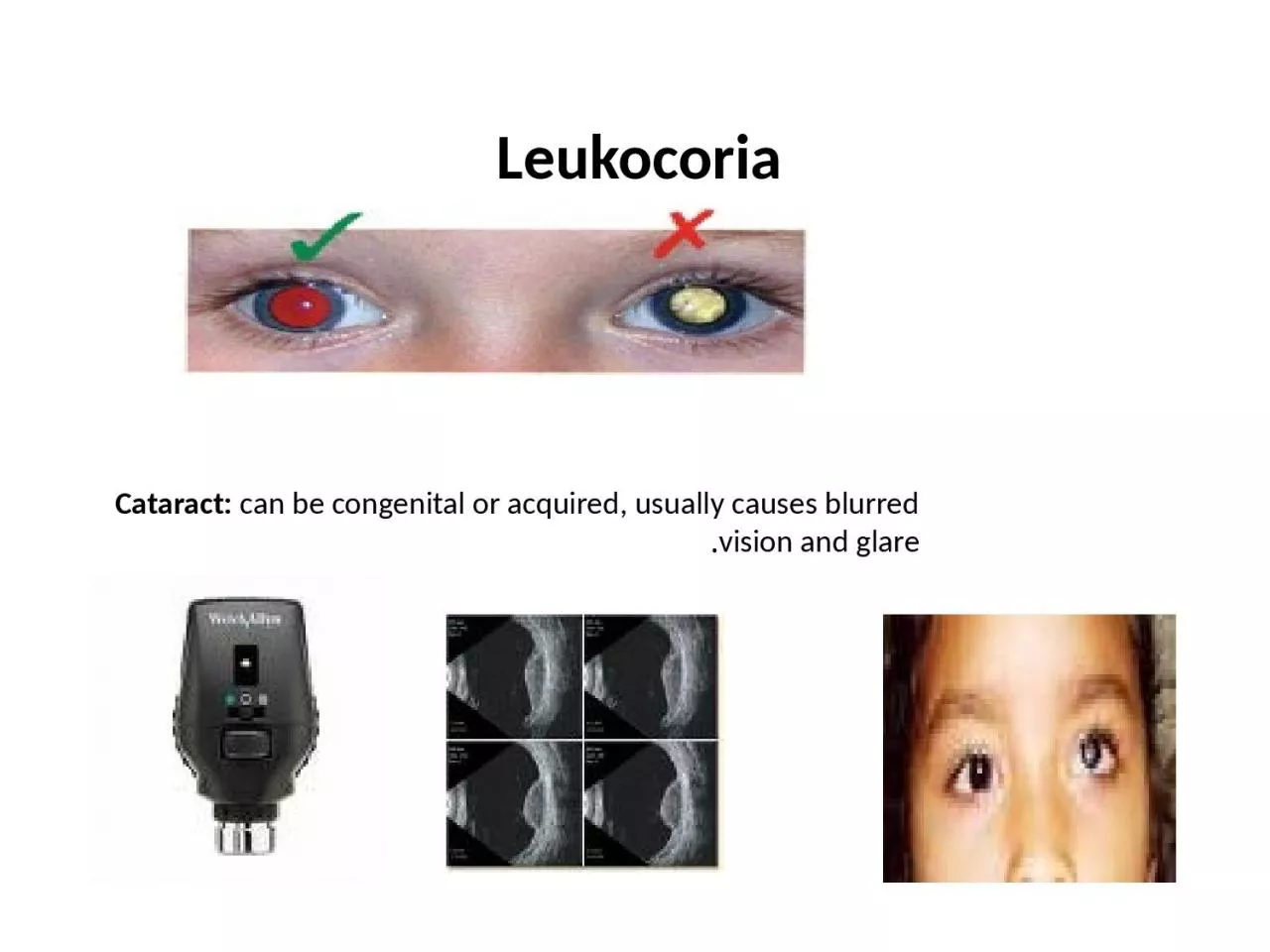

Persistent hyperplastic primary vitreous PHPV is a congenital condition caused by failure of the normal regression of the primary vitreous It is usually associated with unilateral vision loss ID: 1000729
Download Presentation The PPT/PDF document "Leukocoria Cataract: can be congenita..." is the property of its rightful owner. Permission is granted to download and print the materials on this web site for personal, non-commercial use only, and to display it on your personal computer provided you do not modify the materials and that you retain all copyright notices contained in the materials. By downloading content from our website, you accept the terms of this agreement.
1. Leukocoria Cataract: can be congenital or acquired, usually causes blurred vision and glare.
2. Persistent hyperplastic primary vitreous PHPV is a congenital condition caused by failure of the normal regression of the primary vitreous. It is usually associated with unilateral vision loss
3. Organized vitreous hemorrhage vitreous hemorrhage is usually secondary to a neovascular membrane or to a retinal tear. Patients may complain of a red haze, blurred vision, or floaters. As it starts to resolve, color changes to yellow then white and some fibrous sheets may persist. A B-scan is usually diagnostic and vitrectomy is usually required.
4. Retinal detachment: risk factors include trauma and surgery, vitreous detachment, high myopia, retinal breaks or tears, retinal vascular disease, and history of detachment in the other eye. symptoms include flashes of light, floaters, curtain-like decrease in vision
5. Retinopathy of prematurityoccurs in premature, low-birth-weight infants maintained on oxygen therapy. Signs include neovascularization, fibrous bands, retinal detachments and vitreous hemorrhage. When advanced leukocoria can be present
6. Coloboma congenital condition caused by incomplete closure of the the fetal fissure. Degree of visual loss related to area affected (iris, retina, choroid, or optic nerve head)
7. Medullated nerve fibers congenital anomaly caused by myelination of the retinal nerve fibers and usually asymptomatic. When large areas are involved it can cause leukocoria.
8. Coat’s disease: typically a unilateral condition found in young boys. It is characterized by retinal telengiectasia and aneurysms that may cause exudative retinal detachments.
9. Retinoblastoma most common primary, malignant, intraocular tumor of childhood but still a rare tumor. Vast majority become apparent before age of 3yrs. It results from malignant transformation of primitive retinal cells before final differentiation. Presentation is most commonly(60%) with leukocoria and strabismus